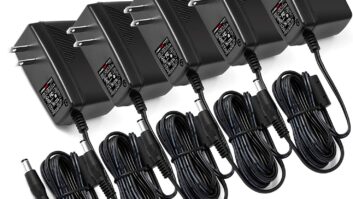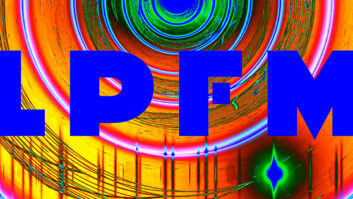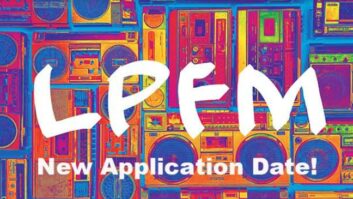Host compatibility testing with listeners indicated a significant impact when higher IBOC power is combined with extended hybrid mode transmission, especially with less-costly SCA receivers.
That finding is part of NPR’s IBOC coverage and interference analysis test findings filed with the Federal Communications Commission.
As part of its studies, the network conducted the first-ever tests on the impact of raising a station’s digital power on reception of subcarriers of the FM analog host station and on the reception of FM analog subcarriers of neighboring stations. The Corporation for Public Broadcasting funded the tests.
The low injection level of SCA subcarriers makes them more sensitive than main-channel programming to the effect of IBOC interference.
The International Association of Audio Information Services had urged the commission to require impact studies on 67 kHz and 92 kHz subcarriers before allowing an across-the-board power increase.
(click thumbnail)
Figs. 29–32 show that MP1 and MP3 participants rated McMartin and Norver receivers between “good” and “fair” depending on IBOC power, while participants rated the MetroSonix and Victory (the only 92 kHz receiver) at or below “fair” at –14 and –10 dBc. The IAAIS represents approximately 100 broadcast outlets in the United States and Canada that use FM analog SCA transmission to distribute radio reading services programming for the visually impaired. The IAAIS was one of several stakeholders that NPR Labs invited to learn about and comment on its work plan, execution and results.
Radio World reported on the mobile testing results (Oct. 21, page 14). Below are excerpts from the FM IBOC host compatibility testing using analog FM subcarriers. We’ll include excerpts of testing results of first-adjacent IBOC interference to SCA in an upcoming issue.
Overall, as RW has reported, the NPR Labs study identified a shortfall between an analog FM’s coverage and its indoor digital coverage. IAAIS told the FCC it recognizes that existing digital coverage is inadequate for some stations and understands the need for an HD Radio power increase for these facilities.
But the purpose of the study excerpted here was to determine whether a 10 dB increase in digital power will affect blind and low-vision consumers’ ratings of radio reading service SCA broadcasts, and the protection ratios necessary to avoid harmful interference.
Objective testing for first-adjacent conditions indicated that IBOC interference was a minor issue, which was upheld in subjective testing. However, host compatibility testing with listeners indicated a significant impact when higher IBOC power is combined with extended hybrid mode transmission, especially with less-costly SCA receivers.
How much of a “hit” the subcarriers take is dependent on the type of receiver used; but in general, the tests show more expensive receiver designs may be needed to generate acceptable 67 kHz performance, while reception at 97 kHz may be unacceptable at or above –14 dBc in all transmission modes.
General SCA reception test results
Tests of first-adjacent IBOC interference were measured first by instrumentation to permit tests of larger numbers of receiver types and RF conditions.
The results indicated that when SCA service areas are reduced by low-efficiency antennas provided with the table model receivers and building losses, the potential impact of high-power IBOC is limited to only the best of SCA receivers. Nevertheless, the SCA receivers were included in the subjective testing to verify the first-adjacent impact. Tests of host compatibility with elevated IBOC transmission power were prepared on the RF test bed and evaluated by listeners in a controlled subjective test.
Host compatibility for SCA receivers
The purpose of this test was to determine (a) how blind and low-vision consumers will rate received SCA audio samples as the IBOC injection level is changed in steps between –20 dBc and –10 dBc, and (b) the level at which consumers would begin to turn off the radio because of the impairment.
Since existing radio reading service receivers are audio band-limited, NPR ran a test similar to the 2004 Tomorrow Radio methodology, with standard consumer SCA receivers using blind and low-vision consumers.
The RF test bed setup was as follows: The SCA audio was produced from a CD deck, connected to the Moseley TFL-280 audio processor and Modulation Sciences Sidekick SCA generator for compression, pre-emphasis and peak limiting. The 67 kHz subcarrier was generated by an RCA SCA generator connected to the Moseley processor, and the Sidekick processor included a 92 kHz SCA generator.
The 67 kHz subcarrier output was looped through the Sidekick and combined with the 92 kHz subcarrier. The combined subcarriers were connected to the Telos Omnia 6EX+HD processor and stereo generator, which combined the subcarriers with the composite stereo signal. Only one SCA subcarrier was generated at a time, with the injection set to 9 percent (75 kHz peak=100 percent modulation), the 19 kHz stereo pilot set to 9 percent, and the stereo composite modulation set to indicate 105 percent peaks at a rate of no more than 10 per minute, as determined by the QEI model 691 modulation monitor when connected to the FM generator RF output.
The majority of radio reading service users live at urban or suburban locations, within 12 miles of the station. To represent typical reception, the RF signal power is set for two input levels equivalent to the FCC field strength at 20 km from a Class B (or Class C2) station, with adjustment for building losses and a –10 dBd antenna, representing a medium signal, and at 5 km from a Class B, representing a high signal. To avoid increasing the number of conditions for the listeners, samples from both medium and high signal levels were randomly selected for the testing.
Audio
Reference audio was taken from radio reading services program recordings, read by radio reading service volunteers. Audio clips were prepared for IBOC transmission at each of three injection levels (–20 dB, –14 dB and –10 dB) and three IBOC transmission modes: MP1, MP3 and MP4, to four receivers, made by McMartin, Norver, and Metrosonix (67 kHz) and Victory (92 kHz).
A Fireface 400 digital I/O unit sampled the audio output of the receivers, which stored the recordings in 16-bit WAV files on a computer. The recordings were reproduced for listeners in the studio using the loudspeaker and cabinet of an actual SCA receiver. This was intended to ensure that the limited acoustic characteristics of the tabletop SCA receiver was heard by the test listeners, as in normal use.
Participants
Eighteen blind and 16 sighted individuals participated. Blind participants were recruited with help from IAAIS and the National Federation of Broadcasters. Announcements were made on the Washington Ear, a Washington-area radio reading service.
Announcements also were posted on message boards and e-mail lists geared towards individuals who are blind or visually impaired. Every effort was made to recruit a cross section of listeners based on their age and gender.
(click thumbnail)
Significant failures occurred at all injection levels with the 92 kHz Victory in MP4 mode, while the McMartin, Norver and MetroSonix produced severe impairments above –14 dBc. There were 11 male and seven female blind or visually impaired participants. Three participants were between 18–29 years old, two participants were 30–39, seven participants were 40–49, three participants were 50–59 and three participants were 60–69.
Testers tried to match the demographics of the blind or visually impaired participants as closely as time would allow. There were four participants aged 18–29, three participants age 30–39, six participants age 40–49 and three participants age 50–59.
Trials
Participants were presented with one audio clip at a time, after which they were asked three questions on the topics of overall sound quality, annoyance of background noise and whether they would keep the radio on or turn it off. They were encouraged to set the volume on the first trial of the test, after which the volume would remain constant.
They were first asked to rate the audio on a six-point scale that corresponds to the ITU-R recommended Mean Opinion Scale: excellent, good, fair, poor, bad and failure. Then they were asked how noticeable the background noise was on a five-point scale including extremely noticeable, very noticeable, noticeable, slightly noticeable and not noticeable. Finally they were asked whether they would continue to listen to the audio, using “yes” or “no.”
Because over half of the participants were blind, they were not able to use the software that sighted participants used to log their responses. Thus experimenters played each sample and asked listeners to hold up their fingers to register their responses (1–5) for MOS and annoyance scores. If participants were trying to signify that something had failed or that they would no longer listen, they were instructed to give a “thumbs down.”
Experimenters entered the data into an Excel spreadsheet while administering the test. The sighted participants used a computer to register their responses. E-prime stimulus presentation and logging software played the audio clips one at a time and then asked participants the same three questions that blind listeners received.
Specific results
MP1 and MP3 tests rated McMartin and Norver receivers between “good” and “fair” depending on IBOC power, while participants rated the MetroSonix and Victory at or below “fair” at –14 and –10 dBc. In MP4 mode (should it be released for future use), significant failures occurred at all injection levels with the 92 kHz Victory, while the McMartin, Norver and MetroSonix produced severe impairments above –14dBc.
The study concludes that when a station raises its IBOC power, it will degrade the quality of that station’s analog FM subcarriers, in the form of increased noise and crosstalk.
In general, the degree of impairment is receiver-dependent; but acceptable 67 kHz performance with high-power IBOC may require more costly receiver designs. Regardless of receiver, 92 kHz reception may be unacceptable at or above –14 dBc in all modes of transmission.
These documented issues with some SCA receivers at higher IBOC power levels are the subject of ongoing discussion with the IAAIS for management strategies on a practical basis moving forward. Notwithstanding these issues, NPR (with IAAIS support), and several commercial groups jointly recommended the compromise power increase proposal to the FCC in early November. Key aspects of that compromise proposal included joint development activity to accelerate the migration of analog radio reading services to digital multicast channels.
The above is based on “Report to the FCC on the Advanced IBOC Coverage and Compatibility Study,” a project led by John Kean, senior technologist for NPR Labs, and Dr. Ellyn Sheffield, Towson University assistant professor of psychology specializing in cognitive testing. To read the report, go to fjallfoss.fcc.gov
Next time we’ll look at the impact on reception of analog neighbors’ subcarriers.














